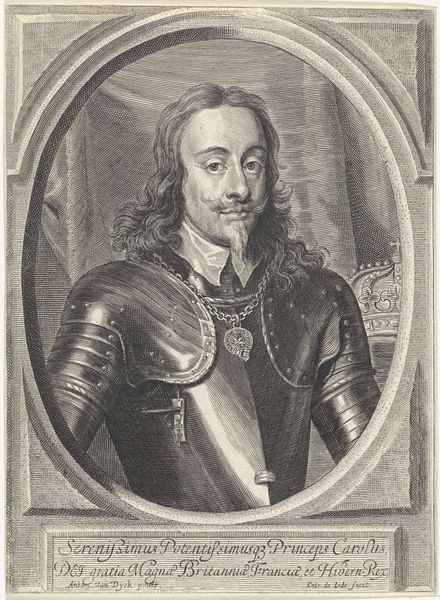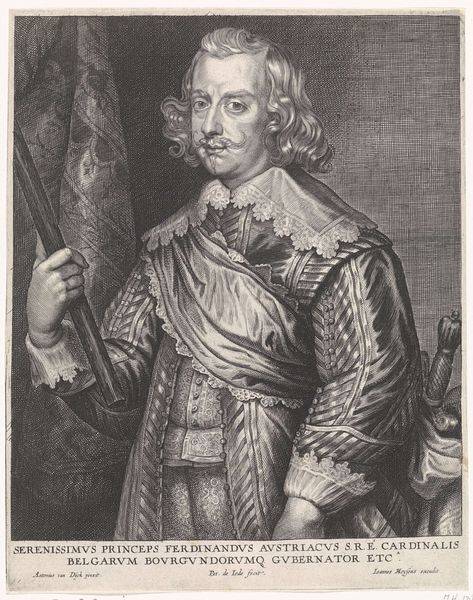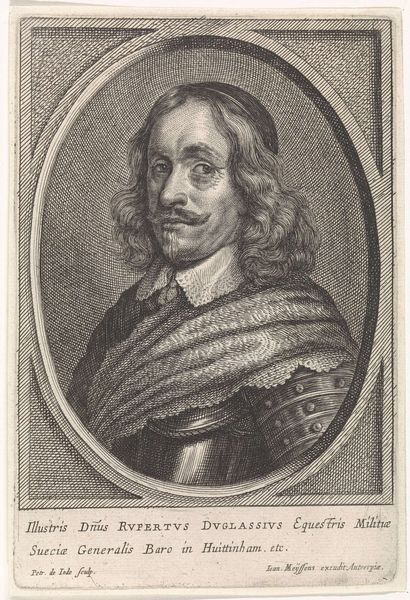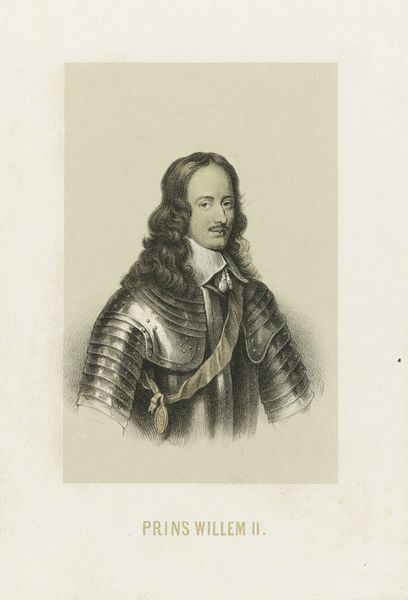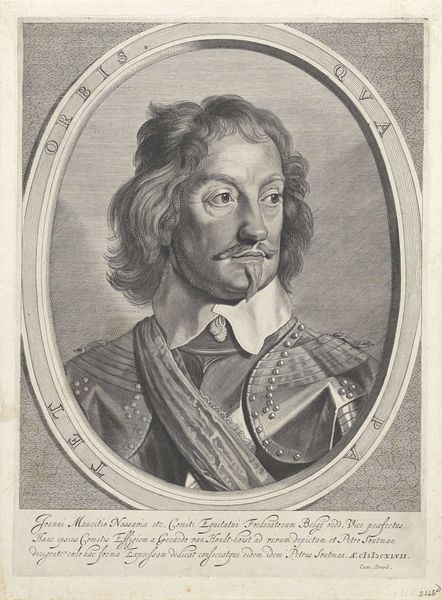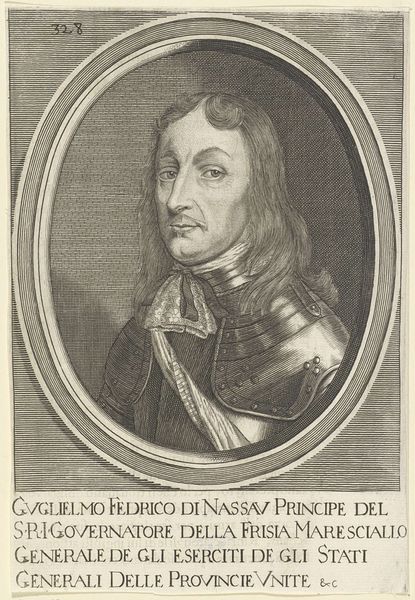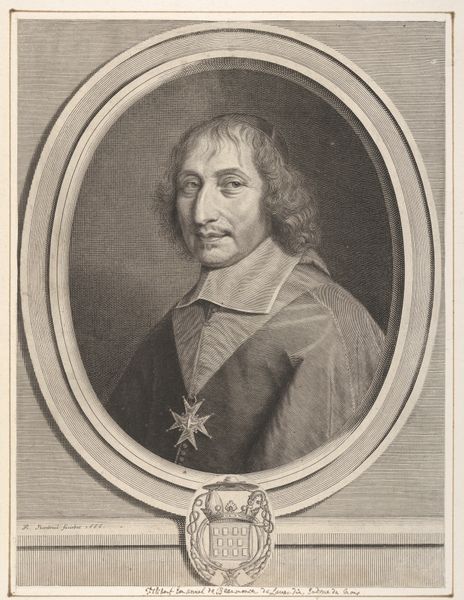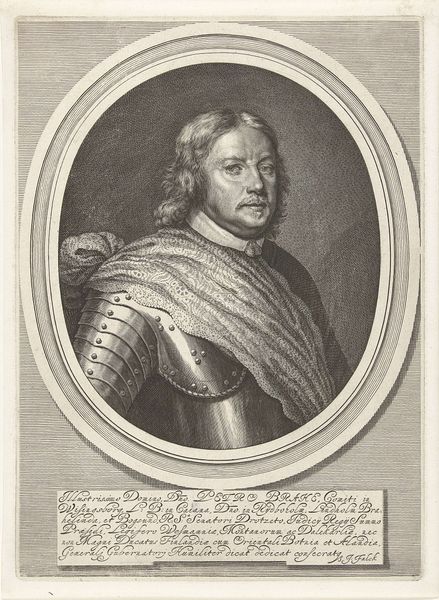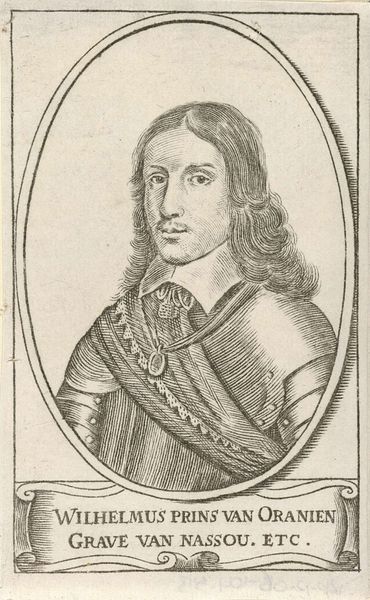
#
wedding photograph
#
photo restoration
#
pencil sketch
#
charcoal drawing
#
charcoal art
#
portrait reference
#
strong emotion
#
pencil drawing
#
portrait drawing
#
fine art portrait
Dimensions: height 455 mm, width 360 mm
Copyright: Rijks Museum: Open Domain
Curator: This is Francesco Bartolozzi's "Portret van Oliver Cromwell," created sometime between 1802 and 1811. It presents Cromwell, the Lord Protector of England, Scotland, and Ireland. Editor: The most striking thing is his direct gaze; it’s both confident and perhaps a bit melancholic. And the stark contrast gives it real gravitas. Curator: Bartolozzi was an engraver, which helps explain the fine lines and tonal range. It's interesting, though, because he was Italian by birth. Why depict a controversial English figure nearly two centuries after Cromwell's death? Editor: The imagery associated with Cromwell shifted drastically over time. Here, the artist presents a heroic figure clad in armour – suggesting strength and military might. Note the baton, a symbol of command, subtly reinforcing his authority. It's all very calculated. Curator: The timing is also telling. At the start of the 19th century, Revolutionary and Napoleonic ideas challenged existing power structures. To depict Cromwell then could have been interpreted as tacit support for radical change or, conversely, a warning about the dangers of overthrowing established rule. Editor: Or perhaps it speaks to a broader desire to visually connect with impactful historical figures, those individuals whose symbolism endures, for better or worse, like an ever-present echo across centuries. He looks so burdened, yet resolved. It's really fascinating how this portrayal simplifies such a complex life into iconic terms. Curator: Indeed. Even the details – the ruffled collar, the meticulously rendered armour – serve to enhance the sense of authority and, let’s not forget, to lend an air of respectability to a man who had been a regicide. It shows that images are not always simple mirrors, they take part in social arguments too. Editor: Yes, it has definitely offered us more to reflect upon than initially meets the eye. The interplay of visual cues here reveals a constant reinvention of our historical narratives.
Comments
No comments
Be the first to comment and join the conversation on the ultimate creative platform.
